-
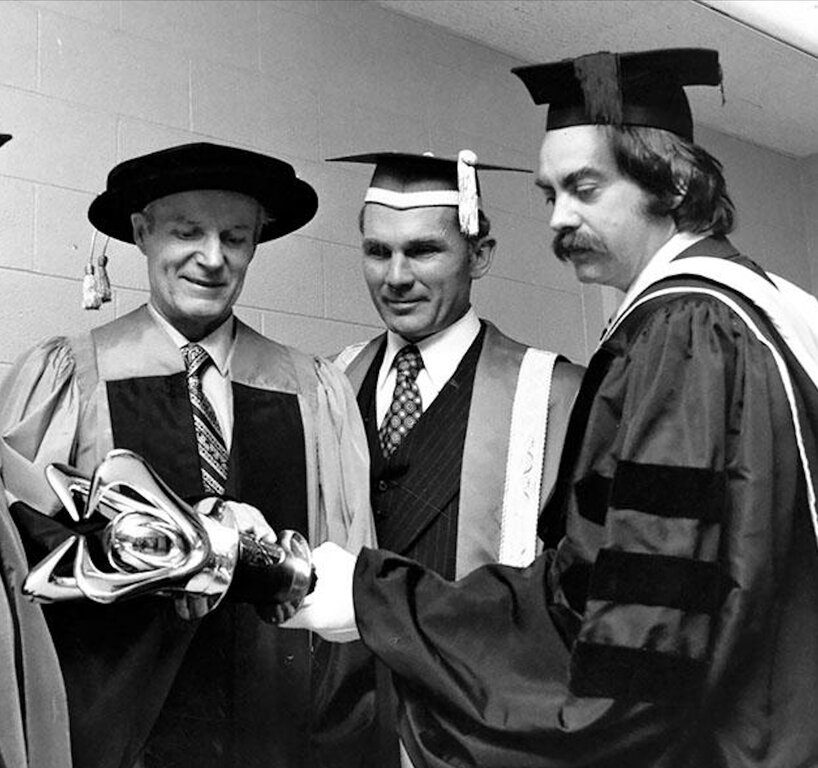
Peter J. Dyck
Peter J. Dyck was recognized with an honorary doctorate from the University of Waterloo on Oct. 18, 1974. Dyck was born in 1914 and immigrated with his family to a farm near Laird, Saskatchewan, in 1927. During World War II, he and his wife, Elfrieda were part of the MCC work in Europe helping refugees…
-
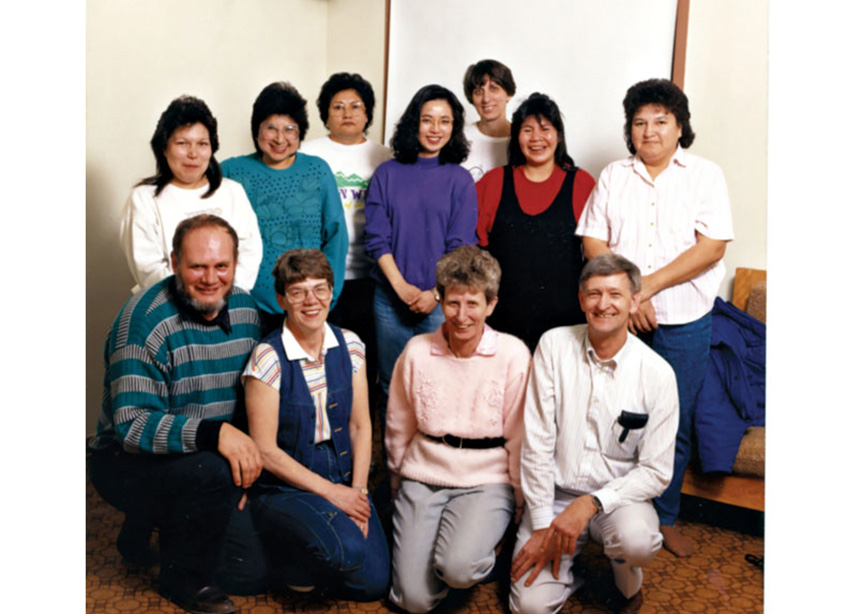
Walnut Receiving Home
In 1976, Jake and Trudy Unrau bought a home at 171 Walnut Street in Winnipeg and opened it up for Indigenous people visiting Winnipeg for medical appointments. In 1977, the Conference of Mennonites in Canada bought the home, and the Walnut Receiving Home became part of its ministry. From 1979 to 1983 Elijah and Jeannette…
-
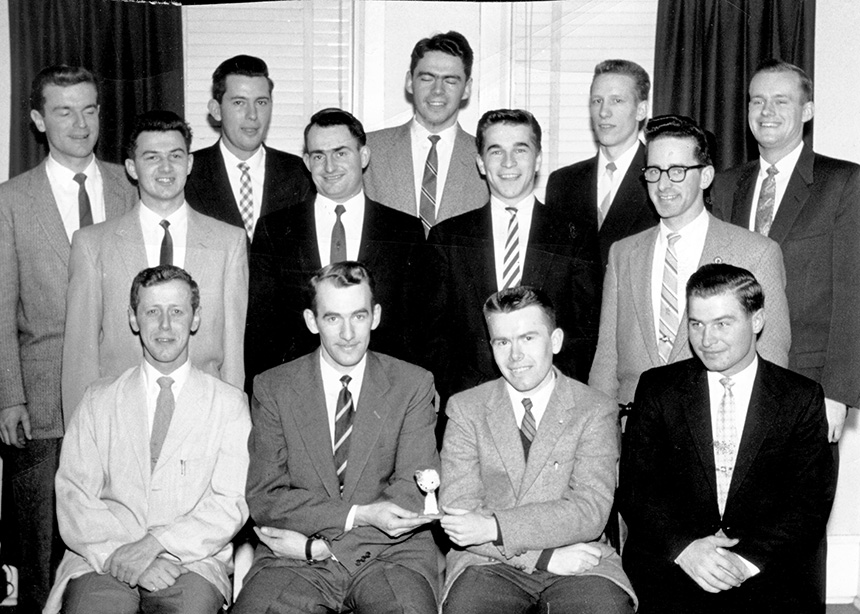
Menno House
Menno House was formed by a group of young Mennonite students and recent graduates living in Toronto in 1956. The aim was to provide support and community to Mennonite students in the city. The group became involved in youth leadership at Toronto United Mennonite Church. Young Mennonite women attended events, though the residence remained open…
-
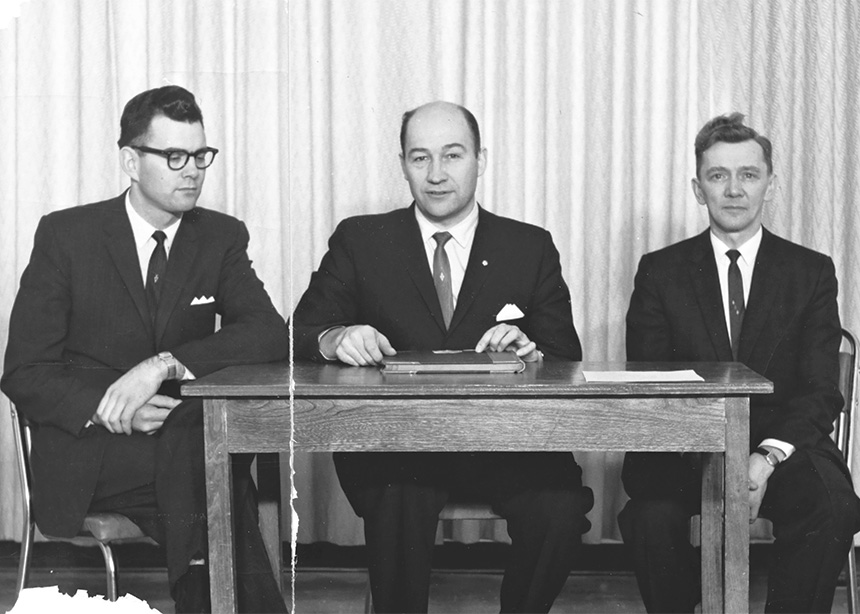
Mennonite Men of Canada
By 1961, men’s groups in General Conference churches had proliferated to the point where a national organization, “Mennonite Men of Canada,” was formed. Here, in 1962, are executive members Henry M. Dick (Calgary), Carl Ens (Saskatoon) and Ted Friesen (Altona, Manitoba). Men’s groups met for fellowship, service projects and to run boys’ clubs. They served…
-
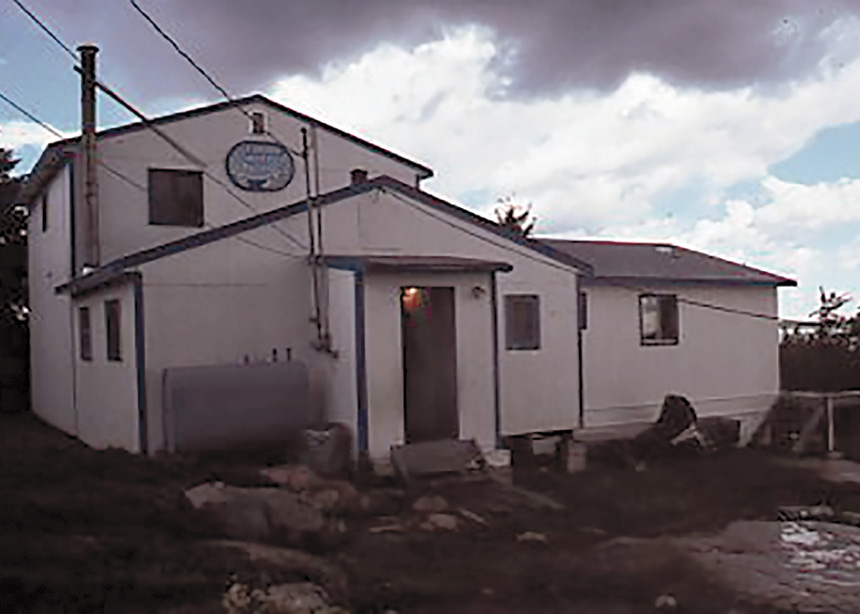
Pauingassi Trading Post
This picture is of the Pauingassi Trading Post, located 276 kilometres northeast of Winnipeg and 16 km from the Manitoba and Ontario border. Mission worker Henry Neufeld brought a request from community elders for a store focused on community well-being, as well as economic viability to the Conference of Mennonites in Canada, and a partnership…
-
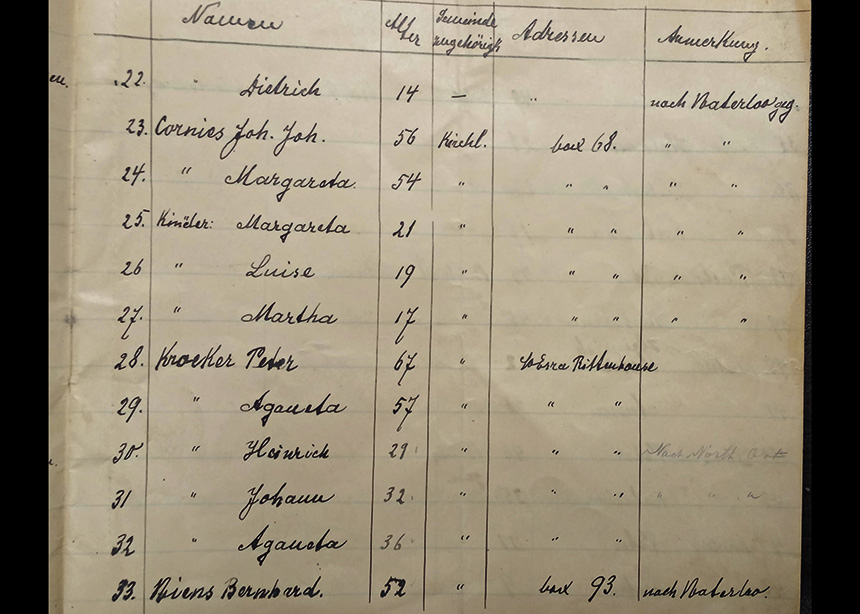
Vineland List
How much can we learn from a list? This image is from a list of Mennonite immigrants from the Soviet Union (Russlaender) living in Vineland, Ont., in 1924. We can see family groupings along with church affiliations. In these early years, Mennonite Brethren and United Mennonites worshipped together. We can also note their housing situation,…
-
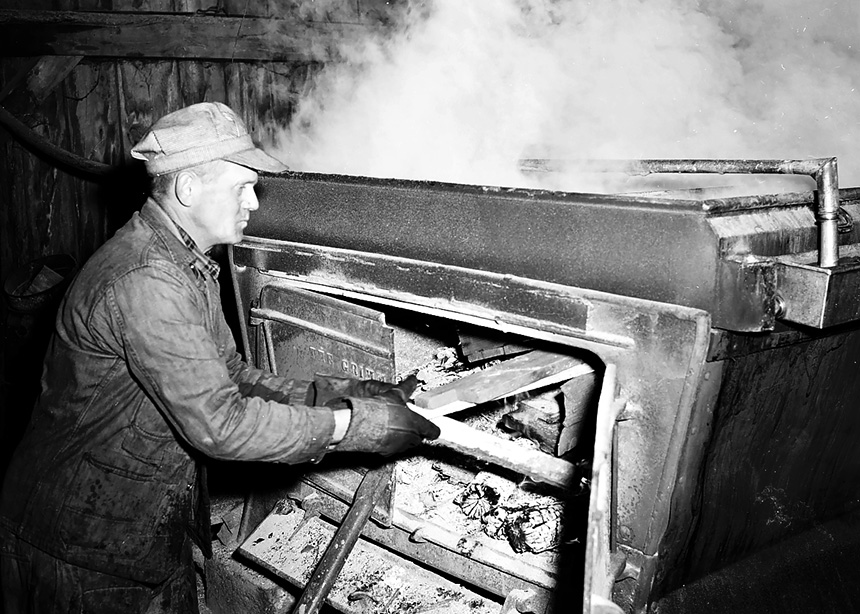
Gilbert Snider
Gilbert Snider stokes his wood-fed, maple-syrup evaporator in rural Waterloo County in 1954. The photographer, David L. Hunsberger, took many photos of working life in Ontario’s Waterloo Region. How much do you know about the working lives of your fellow churchgoers? For more historical photos in the Mennonite Archival Image Database, see archives.mhsc.ca. More moments from…
-
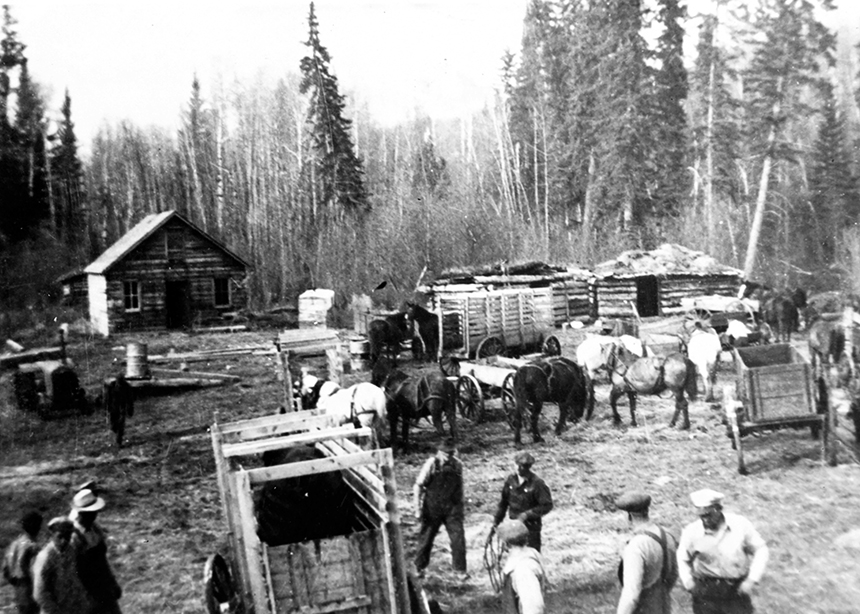
La Crete river landing
“How did the North become the North?” asks historian Gerald Friesen. By the Second World War northern Canada was experiencing an influx of “new technology, money and people.” River landings like this one near La Crete, Alta., were vital links to supplies and markets of the south. Although the first Mennonites who settled here came…
-
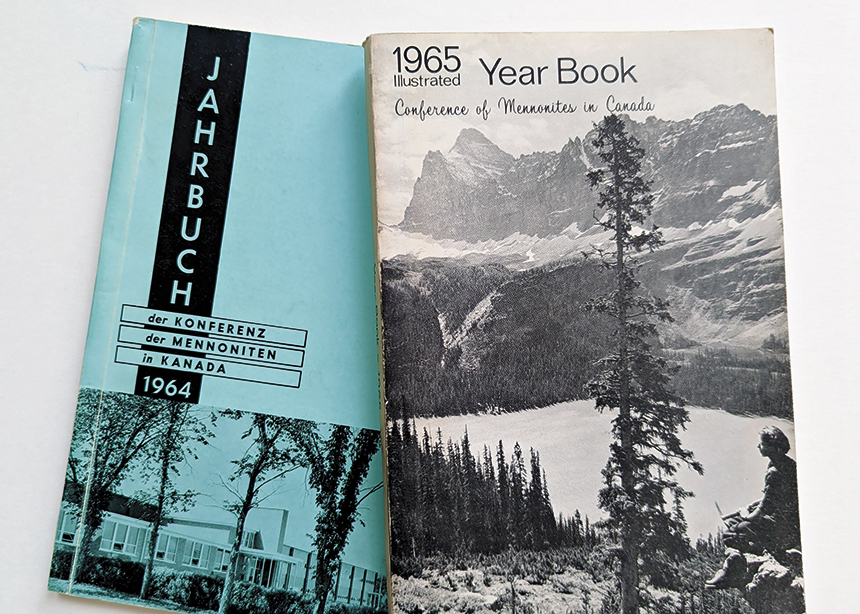
CMC Yearbooks
The Konferenz der Mennoniten in Canada—now Mennonite Church Canada—was formed in 1902. In 1928, the conference started publishing an official Jahrbuch (yearbook) which documented proceedings and decisions at the annual gatherings. Starting in 1946, an increasing an amount of Jahrbuch content appeared in English, rather than German. In 1965, the Jahrbuch become the Yearbook, though…
-
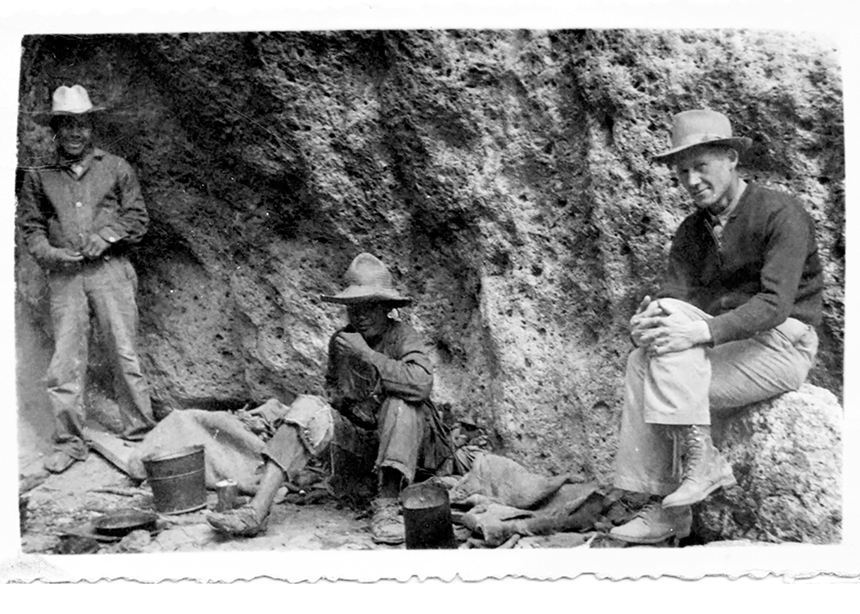
Henry Gerbrandt, missionary to Mexico
Henry Gerbrandt (far right) in Mexico ca. 1947. Henry and Susan Gerbrandt began their mission work with the fledgling Mennonite Pioneer Mission, arriving in northern Mexico on Dec. 21, 1945. Because money was scarce, their first Christmas dinner was macaroni and salt. The work was very trying. Not only did they have to build a…
